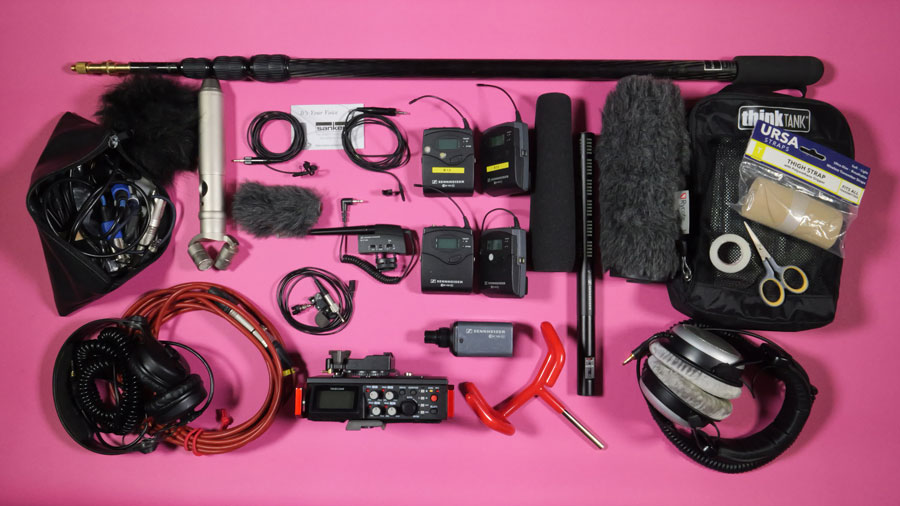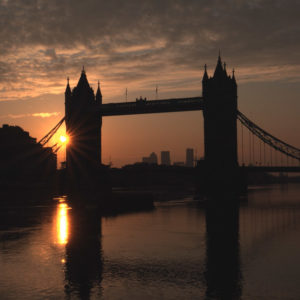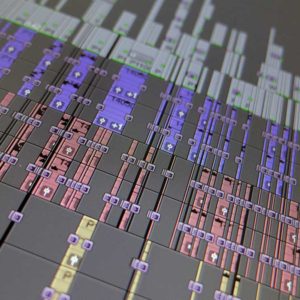
In this post, I offer some perspectives on sound recording for videographers, which I have gained from working as a freelancer across many genres of video production.
Recording when filming solo
As a videographer, I primarily direct and film on my own, so I need to manage everything to the best of my ability. Recording the highest-quality sound available for any given scenario is one required skill.
Planning helps ensure the best possible outcomes. I recommend finding out as much as possible about what you are filming and where it is happening. Consider the sound environment you might encounter. Allow for any potential unknowns or client request surprises.
Packing a few different sound recording options is always a good idea. A directional microphone and a boom pole will ensure you can always record good-quality interview sound in noisy environments. A Lavalier microphone, radio transmitter, and receiver are my go-to solutions for recording interview sound.
Recording the sound (i.e., the contributor) as close to the source (i.e., the mouth) as possible ensures the best quality recording. I prefer to keep the microphone out of shot or not visible, though this can depend on many factors, including what people wear. If time allows, this can also mean getting creative with the microphone position, which takes practice.
Packing the most suitable sound recording kit and giving yourself enough set-up time will help you meet your client’s requirements.
Sound recording kit list
My sound recording kit that I have amassed over recent years and which can be seen in the above photograph includes:
Tascam DR-701D Linear PCM Recorder.
I use this to record sound feeds supplied at venues, additional backup files, or additional clean sync tracks. It can be powered by batteries or mains power, which is helpful for continuous long recordings.
Sennheiser MKE 600 Shotgun microphone with windshields.
I generally use this directional microphone on a boom pole handheld or supported on a stand positioned just out of shot.
2 x Sennheiser EW100 G3 radio transmitters and receivers.
In the UK, I need a radio licence to use these licensed through Ofcom (currently £75 per year). These are very helpful as your contributor can be mic’d up and a transmitter fitted about their person, so they are free to move and not restricted by a sound cable to the camera.
Sennheiser MKE 400 directional microphone with windshield.
I use this on camera to record higher-quality sound than the camera’s internal microphone.
2 x Sanken COS-11D PT Lavalier microphones.
I use these two microphones with my two radio transmitters.
Tram TR-50 Lavalier microphone.
I use this with my radio transmitters or connect it via an XLR cable to my camera or Tascam recorder.
Rode NT4 stereo condenser microphone.
I’ve used this microphone to record live band music. It’s my least-used mic, which I brought for a particular gig.
Gitzo G557C carbon fibre boom pole.
I use this to hold my shotgun microphone, either handheld or on a stand supported by a boom pole.
Sennheiser HD25 headphones.
These are very sturdy and always in my kit bag. I’ve had my pair for many, many years.
Beyerdynamic DT 880 Pro headphones.
Closed headphones help me monitor sound better, especially in noisier environments. I generally use them in conjunction with my Tascam audio recorder.
I also have a wide selection of XLR audio cables, various audio plugs, sockets, and adaptors to ensure compatibility with any required audio connections that I am likely to encounter. Being prepared to resolve any potential connection hurdles is very helpful for videographers when recording sound.
Helpful sound recording tips
To get the best sound recording, the placement of Lavalier microphones can need some consideration, especially if you want to hide them. To help me with this, I have a small bag with concealer tape, surgical tape, scissors, Lavalier microphone covers, and radio transmitter support straps.
When recording sound, you need to protect your microphone from any air movement or wind noise by using a windsock if you are outside or a foam windscreen when you are indoors.
As a freelance videographer, I’m happy to film and sound record one or two people in a sit-down interview-like situation with one or multiple cameras.
When required to film and record the sound of more than two people, I always suggest to the client that they use a dedicated specialist sound recorder so that they can manage and monitor the sound correctly.
If you have any questions about sound recording for videographers, please get in touch.



